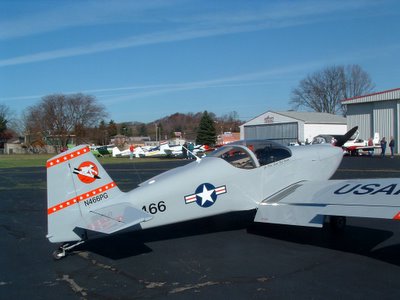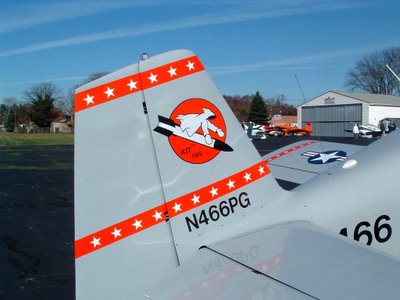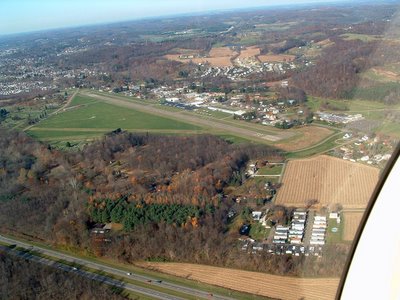I had a four day weekend to work with, so I thought it a good time to get these done. I pulled the cowls off and took a look around the engine area. It's always nice to get a good, close look at stuff under the cowl and re-convince myself that everything is firmly attached. I've been reading quite a bit on engine-related stuff in the Bingelis On Engines book I bought, so everytime I look I learn something new about Papa Golf. This time I noticed that I have a conical engine mount, rather than the Dynafocal mount I'm used to. The difference in the two is the angle that the four attachment bolts go into the engine. The conical mount bolts go into the engine case perpendicular to the back of the engine. A dynafocal mount puts the bolts in on a diagonal pointing towards an extended focal point from the inner ring of the mount. The difference is cost vs. smoothness. The conical mount is a few hundred dollars cheaper than the dynafocal, but it doesn't dampen engine vibrations as well. That goes a long way towards explaining why I feel so much more vibration in the RV than I did in the Tampico, something I've been wondering about.
You can see both types of mount here. The first pictures show a conical mount on an RV-6, and pictures further down the page show the dynafocal mount.
I also discovered that it's pretty darn hard to get the oil drain plug out when the ambient temperature is 25 degrees F. After nearly rounding it off completely, I managed to get a big enough wrench on it to get it off of there, but let's just say it's a good thing I was replacing it with the quick drain valve anyway. In my glee at finally getting the recalcitrant bugger off of there, I nearly forgot to remove the plug from the oil catch pan before letting the dirty oil pour out. Co-pilot Egg was there to remind me and save the day. What an unbelievable mess that would have been!
I thought my troubles were over once the drain plug was loose, but the oil filter was just as reluctant to come off as the plug had been. Winter sucks. After enough struggling with the filter wrench, it finally broke loose. By this time, of course, the plastic grocery bag I had positioned over the filter as a prophylactic against oil spilling all down the back of the engine had slipped out of position and a torrent of inky black oil did just that. I keep plenty of paper towls and kitty litter on hand for just this kind of thing, but it sure is nasty work.
The cowl hinge pins will work just like the old ones in holding the cowl halves together, but because they will be installed from the front, rather than through the instrument panel, they will be shorter and thus less prone to bending when being pushed in. They have screw tabs on them to hold them in place, so a couple of nutplates needed to be installed. I got some help with that from Rick, who's building a Vans RV-9A. We glued the nutplates in, but I left the cowl out in the garage over night where it was too cold for the epoxy to set correctly. Since the glue didn't thicken up like it would have in a warmer environment, it all ran down the side of the cowl instead of staying on the nutplate. I brought the cowl inside and re-glued the nutplates. You wouldn't think you'd see things like this in the house of a non-builder:

The glue was nicely set this morning, so the cowl is ready to go back on the plane. Hopefully I can get that done today and get back in the air!
Update:
Cowls went back on with no problems. Co-pilot Egg was able to assist, thus proving that the job can be accomplished by one moderately competent adult and an extremely competent almost 12 year old. The new cowl pins from Vans worked great! They were so much easier than the old pins, and I don't have to worry about any hidden bulges back behind the panel masking the fact that the pins aren't fully in.












